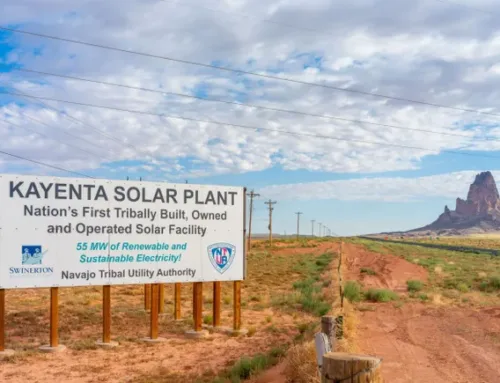Power to the people: the rise of community energy
April 1, 2025
The energy crisis has been anything but a crisis for the fossil fuel giants and their shareholders. Companies like BP and Shell have posted bumper profits since Russia invaded Ukraine and sent gas prices soaring. Meanwhile, a record number of households have slipped into fuel poverty – 6.1m and counting in the UK, according to the charity National Energy Action – with bills set to rise further.
Against this backdrop, a quiet revolution has been taking place in the UK, where communities are, literally, taking back the power. Emboldened by the falling cost of renewables, groups across the country are beginning to meet their own energy needs, making them less vulnerable to price spikes and trade tariffs, while reducing their carbon emissions at the same time.
According to the latest Community Energy: State of the Sector report, by Community Energy England, Scotland and Wales, there are around 398MW worth of citizen-led renewable energy projects across the UK – enough to power around 280,000 homes – with another 209MW planned.
In south-east London, one pioneering community energy co-operative has taken on the dual task of expanding the amount of local solar power and tackling the growing issue of families being forced to choose between heating and eating.
Over the last 10 years, South East London Community Energy (Selce) has raised more than £500,000 to provide free solar arrays for a dozen local community buildings – mostly primary schools. Meanwhile, each year, its team of trained energy advisors helps around 2,000 vulnerable households from falling into fuel debt. The Greenwich-based co-operative has also set up a range of free, grant-funded advice workshops and programmes to help ‘retrofit’ local homes with better insulation, heat pumps and, of course, solar power.
“I can’t say it has been an easy ride,” recalls Camilla Berens, one of the dozen volunteer directors. “Politically, the climate has been very turbulent for community energy groups. Sometimes I still find it hard to believe we have gone from a handful of volunteers operating from a large broom cupboard to an office with a team of 25.”
Selce (pronounced Selsey) raises the money for its solar projects through community share offers – a form of social investment. Supporters are invited to invest anything from £250 into each project. In return, they receive an annual interest payment of around three or four per cent.
“The majority of our investors are local but we have quite a few from further afield,” explains Berens. “Essentially we are a network of like-minded individuals.” East London-based Edward Whelan is a typical example. “Selce is semi-local but it’s important to me that my savings are invested ethically and help to make a positive change.”
Once the team has raised the funds, the solar arrays are installed free of charge. Selce then acts as the solar energy provider but offers a much cheaper rate than a commercial supplier. It’s the income generated from these solar partnerships that allows Selce to make its annual payments to investors. At the same time, it puts aside funds to repay its supporters’ initial investments over a fixed period. Any surplus goes towards its programmes of energy advice and free insulation for local households.
It’s important to me that my savings are invested ethically and help to make a positive change
The partner schools in its solar programme benefit financially as well. One of Selce’s first partners, Horniman primary school in Forest Hill, now saves around £9,000 annually in electricity costs. Mulgrave primary school in nearby Woolwich saves around £3,000 per year. “Everyone has been affected by cuts in spending so this extra money helped fund resources that we wouldn’t otherwise be able to buy,” says former headteacher Dr David Dixon.
“Some of Selce’s profits go towards alleviating fuel poverty, which a lot of our families experienced, so that was another way of helping the locality,” adds Dixon, now an education consultant. The school’s sustainability journey was even embedded in the curriculum. “The data from the solar generation was used in maths,” Dixon continues. “We also taught children about renewables versus non-renewables, so science came into it, too.”
Today, Selce is gearing up for its most ambitious community share offer to date. It aims to raise £325,000 for two large-scale projects needing 800 solar panels in all. The team also hopes to double the number of investor members.
Find out more about Selce’s community share offer
Join the Selce community and help to grow the revolution in people-powered renewable energy
Find out more
Meanwhile, the government has pledged to provide greater support for the community energy sector with low-interest loans. So, does this mean a sunny future for groups like Selce?
“It’s definitely good news but we’re waiting to see the details,” says Berens. “In the meantime, we can’t put everything on hold. We live in an area where the support infrastructure is under incredible strain.”
However, she remains optimistic. “Whatever happens, we’ll carry on,” she says. “I really believe that community energy groups are playing a key role in building the path to a sustainable future. When people invest together, they thrive.”
Selce’s upcoming community share offer will fund the installation of more than 800 solar panels for community buildings, making local ownership of renewable energy a reality. By investing, both individuals and organisations can help build a cleaner, fairer future.
Illustration: Florimond Mochel
Search
RECENT PRESS RELEASES
Related Post




